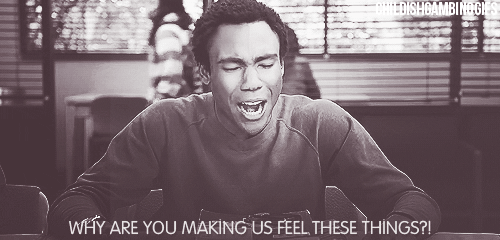Its the new year! That means it is the time for setting new intentions and thinking about how we could enrich our minds, bodies and souls through our everyday practices!
The “New Year’s resolution” is a wonderful tradition that sometimes gets flack because it is hard to follow through with. Traditionally people will joke and point out that most new years resolutions don’t last more than the first month. According to this study only 8% of Americans actually follow through with their resolutions and 38% of Americans don’t even attempt to make a resolution. This statically low success rate and the awareness of it ironically creates and perpetuates the environment where we expect ourselves to fail.
So how do we succeed??
We change our mindset.
What does failure look like? Its an interesting thing to look at because when do we actually fail? Is it when we stop trying or is it when things get hairy?
Maybe you are trying to cut sugar out of your diet and about, oh I don’t know, 1 month and 14 days in your partner buys you some amazing caramels from a local chocolatier as a random act of consumer driven kindness (IE a valentines day gift). AND what if you enjoy the crap out of those caramels. (You wouldn’t want him to feel rejected right??? RIGHT???)
Does this equal failure?
Did you fail at your goal to cut sugar out of your diet? Well I guess you could say yes. Then you could just give up and not try anymore.
Maybe you need to re-asses your goals and be more clear about what you want- Do you want no more sugar ever, or do you want to drastically reduce the amount of sugar you eat?? Once you figure out what your goal is this can help with the progress at hand. The question still remains-what if you truly wanted to go zero sugar and you slip up?
Well let’s try to look at it this way; maybe the fact that you slipped up is just an affirmation that your mind is really profoundly changing and the resistance is a sign that you are holding on to the old you? Maybe the presence of the slip up or the desire to slip up is just a sign that you are about to really change and the old you is scared? Maybe you are so resolved that you CAN’T succeed that you have to prove yourself right? Your old self sees the new and better you and is saying “uh-uh, not in MY HOUSE!”
Wow. Who does the old you think they are??? Why do they get to call the shots! Maybe it’s time for a new person in charge, right!!? It’s time to lovingly say to your old self “You don’t get to call the shots anymore!” Even if we slip up- we only fail if we let our old selves get the last word.
(This was very much so inspired by the work of Jaime Smart if you do not know him please check out his website! He is very intelligent and has helped me change myself for the better)
So with that being said I want to present the most important change you can make in your life with this new year!
Self Care – EVERY DAY.
I know “self care” is a popular term right now and there is lots of conversation around it. I think lots of people are familiar with the idea around it but how many of us are actually pursuing this regularly?
This isn’t just some trend! It’s not just some lingo to use to fit in with your meditation club! (is that a thing!!!?) It’s a real bonafide practice that promotes better physical, emotional and spiritual well being and was developed by doctors and mental health practitioners over the last 4-5 decades!
I remember a counselor giving me my first ever self care list over 10 years ago! I was really excited!
So what is it? Well generally speaking it is something that keeps you healthy (mentally, emotionally and spiritually) and really can vary from person to person. Some general self care things would be; getting enough rest, eating healthy food, drinking enough water, regular exercise, journaling, talking to special people, meditating, etc.
Some of you may already be overwhelmed!! How do I do ALL of these things everyday! Well the simple answer is you don’t.
You start out by changing your thinking. You are not just adopting a list of duties everyday- that would be self defeating in a way. You would still benefit from them, but you are less likely to withstand long term change if you do not feel the deeper sense of self worth that is available from these practices.
Any doctor can tell someone to change their eating habits but how much higher is the success rate if that person deeply understands what is going on physically and chemically when they eat nutritious food and truly understand their worthiness of this kind of pleasure and peace!
So here is an easy way to start.
Find your time- everyday. Doesn’t have to be the same time everyday, although that is beneficial to creating new rituals it can be difficult for those with unpredictable schedules or children. SO just find a time. (**side note- you do not have to be child free or even home from work to do most of these, if the wheel lands on one of the few activities that would be hard to do with children around or at the office then just spin again!)
Sit in the beginning and just close your eyes for 30 seconds to 1 minute and really assess how you feel.
Say out loud to yourself: “I am worthy of self care. I am worthy of feeling good. I value my own well-being.”
Spin the “Self Care Wheel”- and do the self care act.
Say out loud to yourself: “I am worthy of self care. I am worthy of feeling good. I value my own well-being.”
Sit and close your eyes for 30 seconds to 1 minute and really assess how you feel.
The end.
This can be 10 minutes, it can be an hour. You can do multiple things or you can do just one. Be sure to really assess how you feel before and after because if you can really see the benefit you will feel more motivated to keep at it!
Do this everyday, and remember when you start to feel yourself thinking “agh I don’t have time” or “I don’t want to do that”, or you notice that you haven’t done it for a week STOP YOURSELF, say to yourself “Wow look how profound the change I am making is that my old self is resisting it! I should keep going!” AND DO.
I hope you all have a beautiful and self loving 2017! Be sure to keep an eye out for the TruBirth: your conscious and connected reproductive journey e-learning course coming out in March!
Here are some good tips on the items on the wheel:
Self Massage: This is a great way to release stress, it can be done to any part of the body and there are several great tutorials on YouTube! Here is one for the head and neck: https://www.youtube.com/watch?v=cN2cDMdvdxM
Self Acupressure: https://www.youtube.com/watch?v=Orkrm_JIBlg
Salt bath: For this you can use your bath tub and take a whole body bath with salt- or you can fill up a sink or bucket and soak your feet. Add some coconut milk and an essential oil for a extra special experience (Make sure to add a fat with your essential oils to dilute them. It may seem like a whole tub full of water would dilute it enough but it doest dilute it at all. Since oil does not mix with water and our skin is waterproof this means that the oil will sit on the top of the water and our skin will absorb it as if it was undiluted)
Oil Pull: You can use 1-2 tsp of either coconut oil, sunflower oil or sesame seed oil and swish it around in your mouth for 15-20 min. This has been shown to gently detox your gums and teeth and has even been shown to whiten teeth!
Yoga: Do a simple sun or moon salutation! YouTube has several videos to choose from that can guide you through the process! https://youtu.be/uMV4Nq6jpu0
Meditation: These can be found on Youtube. You can select from 5,10,15 minute and so on! Another great tool is the HeadSpace App!
Rebounding: This is usually done with a trampoline but can also be done by preforming jumping jacks on the floor or using a jump rope! This is a great resource for learning about rebounding: https://wellnessmama.com/13915/rebounding-benefits/
Journaling: You can focus on one idea or let your mind explore! Write down what comes to mind! Listen to what your mind has to say!
Daily energy routine: This is a 5 minute routine that can really help your body! https://www.youtube.com/watch?v=gffKhttrRw4
Breathing exercises: There are several kinds of breathing exercises here is a really simple one: http://www.thesacredscience.com/a-breathing-exercise-to-take-you-higher/
Grounding: This is the act of connecting ourselves to the ground, much like the appliances in our house which ground to secure their electrical stability, we also have electromagnetic properties and grounding ourselves from time to time is a very healthy and helpful practice. It can be done by stepping outside (ideally on soil or grass) with bare feet. If you are incapable of getting outside barefoot you can purchase grounding mats to use or just go outside with shoes on (this does not have the same effect as going barefoot but it is undeniable that going outside has its own benefits that can help)












